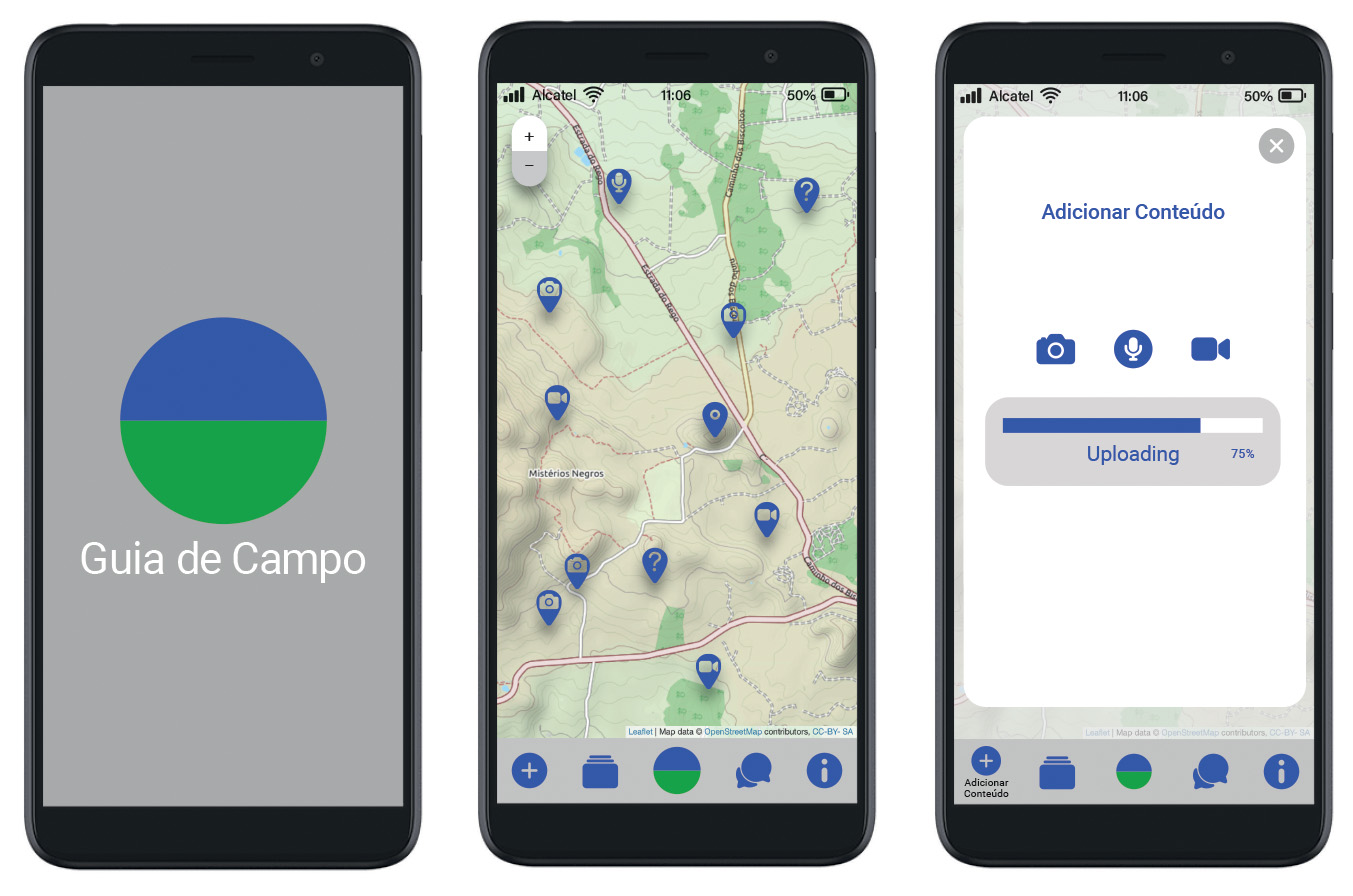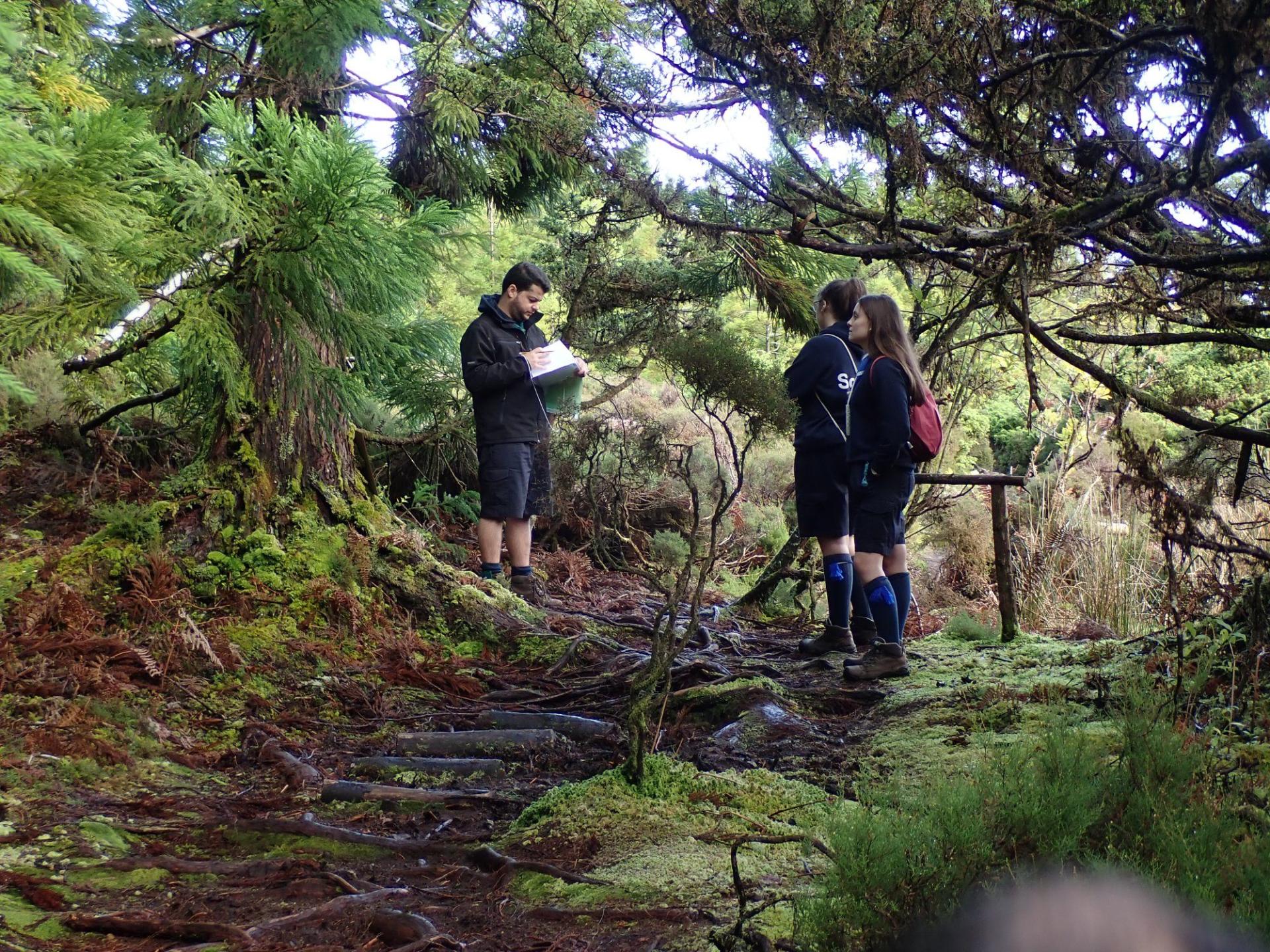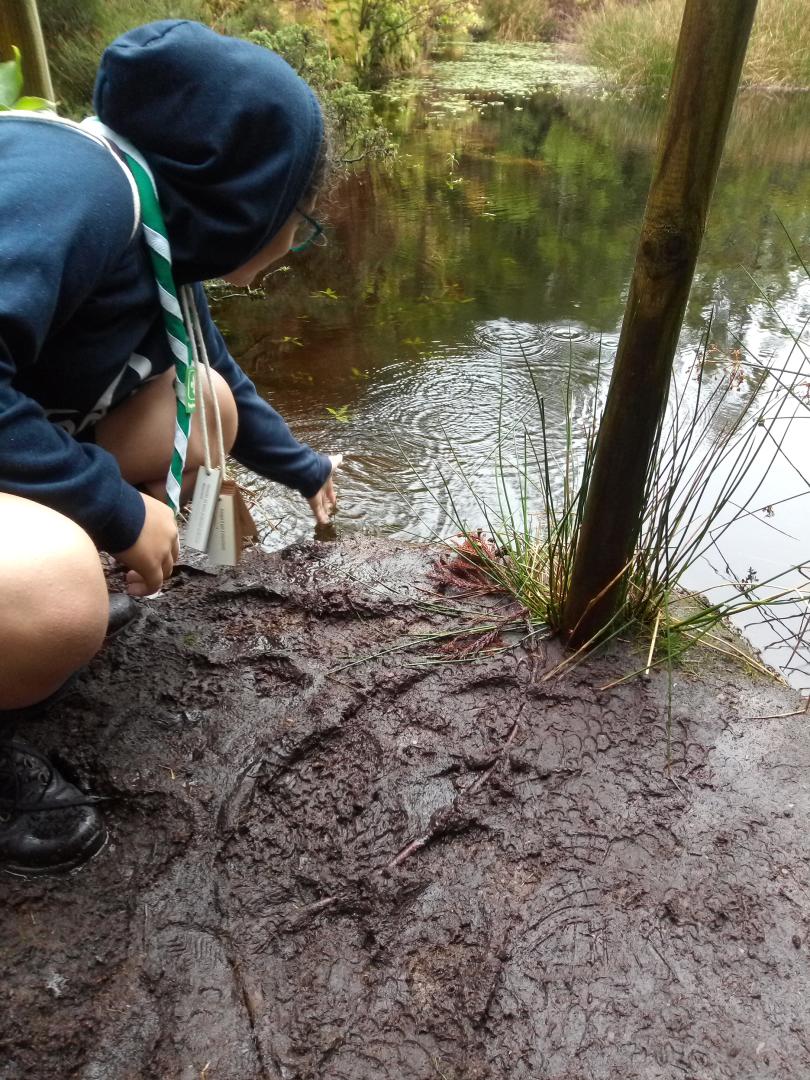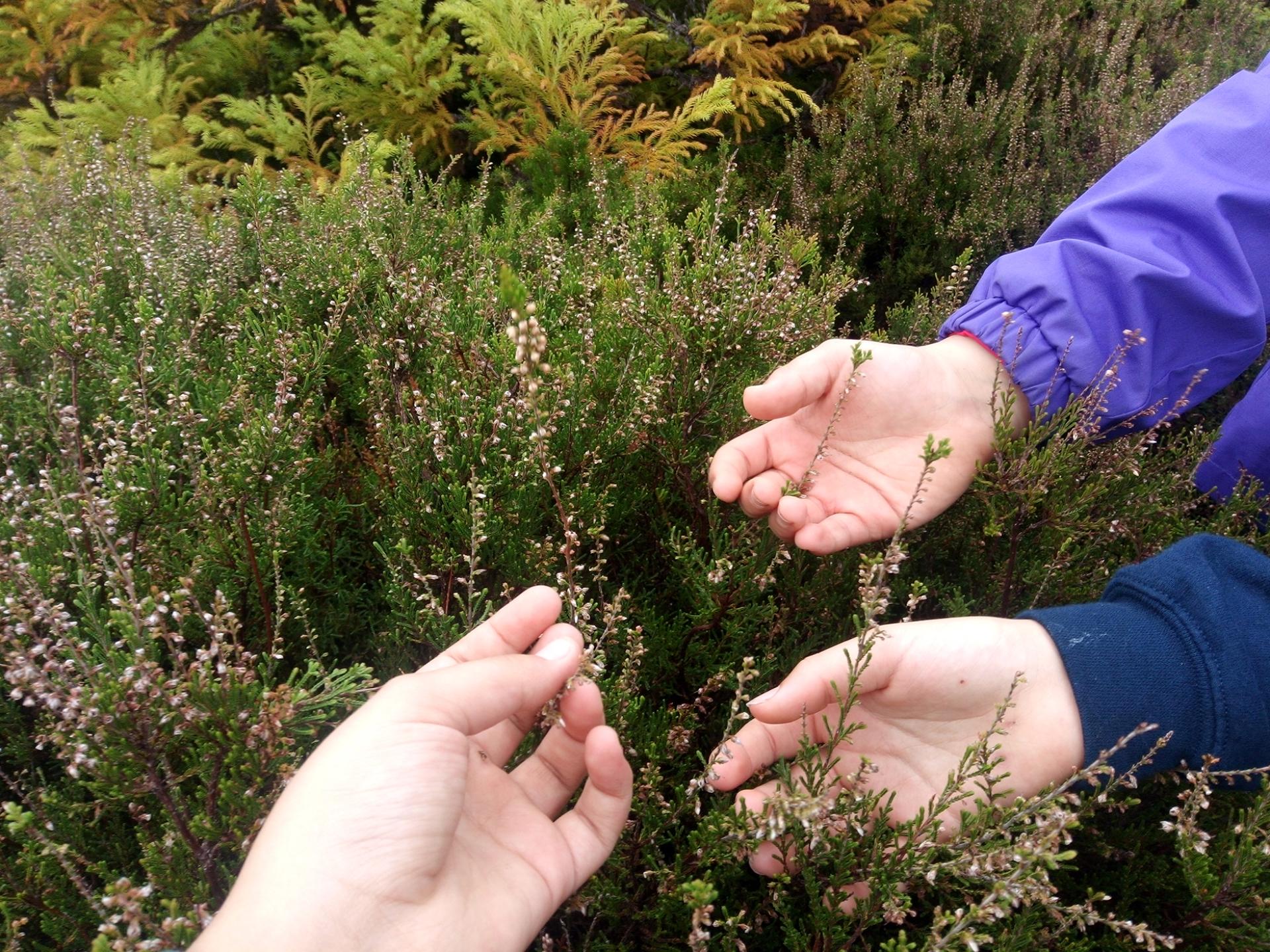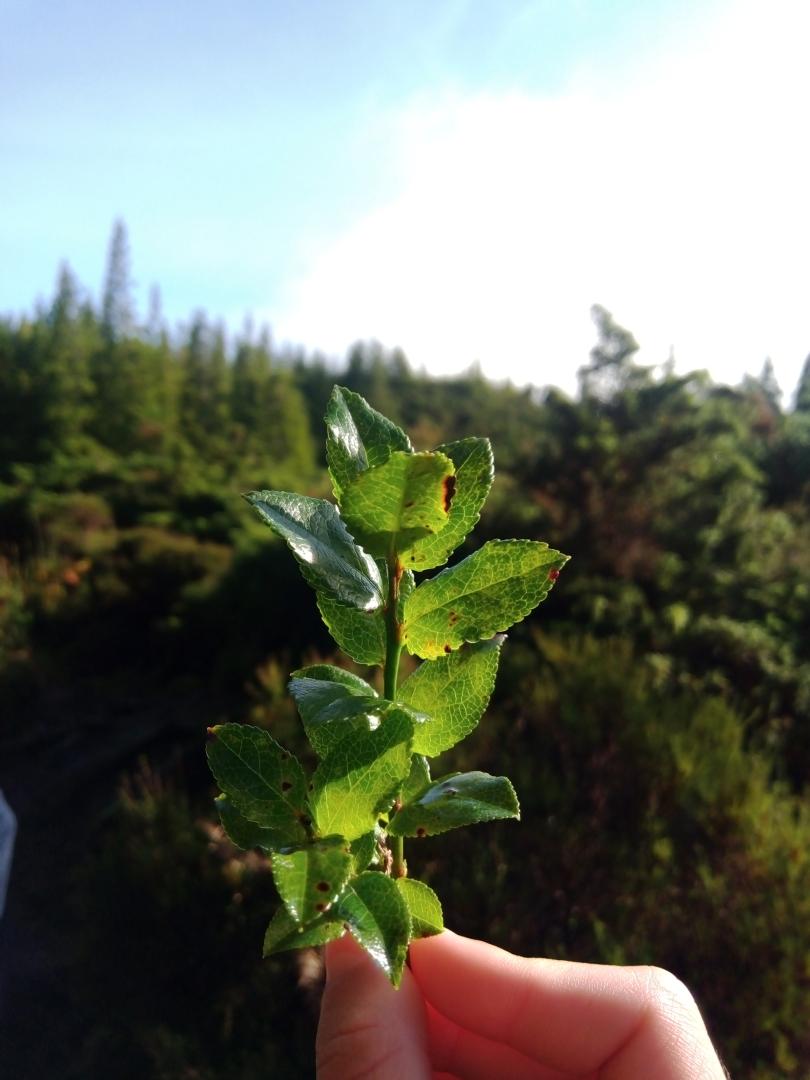Field Guide
Basic information
Project Title
Full project title
Category
Project Description
We designed the Field Guide app (also known as Guia de Campo) to support place-based learning whilst connecting children and teenagers to Azorean biodiversity. The Azorean archipelago is an isolated biodiversity hotspot that faces critical ecological challenges despite the relatively low population density. With FG, we aim to contribute to such an urgent matter through mobile interactive experiences designed to raise awareness of biodiversity loss and its implications for life on the planet.
Project Region
EU Programme or fund
Which funds
Other Funds
Project funded by The Foudnation for Science and Technology (FCT) Portugal.
Description of the project
Summary
The Field Guide (FG) app is a mobile interactive tool designed to support place-based learning. With such a tool, we aim to create experiences that connect children and teenagers to Azorean biodiversity. The Azores is one of Portugal's most fascinating and isolated biodiversity hotspots, including more than 400 endemic species (Borges et al., 2010). Despite its relatively low human population density, the archipelago faces critical ecological challenges, such as increasing human intervention, land use, invasive species and climatic shifts (Ibid.). It is therefore imperative to connect younger generations of Azoreans to local biodiversity. We created this application to engage participants in the co-creation of learning materials; rather than providing participants with a manual featuring local biodiversity, the app invites participants to post questions during visits to the region's nature parks. The tool uses geo-location to position questions and the answers provided by scientists studying Azorean biodiversity within a virtual landscape. We believe our approach counters top-down strategies often used in environmental education projects whereby participants are passive recipients of content regarding nature. The content provided in the app was developed based on the interests about nature expressed by a pilot group of Azorean children. With FG, we want to know what interests children and teenagers about nature. What do they already know about biodiversity? What do they still want to discover?
Key objectives for sustainability
With Field Guide, we wish to bring children and teenagers outdoors with the view of counteracting the sedentary and isolated nature of today's technologically mediated experiences. Therefore, our interest in 'place-based learning' activities and tools to bring positive effects when forming an environmentally literate generation. Ultimately, we hope to contribute towards establishing meaningful connections between younger generations and their local nature-rich environments. Field Guide is, therefore, an approach to tackling the pressing challenge of biodiversity loss within the vaster framework of sustainability.
Recent studies highlight the importance of exposing children to the natural world from an early age (Dowdell et al., 2011); this echoes a growing effort to develop pedagogical innovations that place a particular emphasis on learning activities that occur outdoors (Beames et al., 2012). Contrary to this, in many contemporary settings, we witness a disparity between the time children spend indoors with technology and exploring and playing in natural environments (McCurdy et al., 2010). Such opposition places a renewed pressure on educationalists and designers to foster and create technologically mediated experiences that connect a younger generation to natural environments while enhancing their curiosity for the natural world. Only then will children be inclined to protect nature in all its complexity (Palmberg & Kuru, 2000).
Key objectives for aesthetics and quality
In conceptualising the Field Guide app, we considered the importance of participants using the platform to share their questions regarding biodiversity and the experts' answers to such questions. We also felt the value of incorporating flexibility when adding multiple contents that could enable sensory, experiential and aesthetic encounters with nature. Therefore, when devising the app, we used a cultural probe approach (Gaver et al., 1999) to test initial ideas. Here we drew on the work of Sauvé (2005) and the recognition of the growing importance of sensorial, experiential (direct contact with nature), creative (or aesthetic) experiences when connecting humans to nature. This perspective attunes to more recent work in environmental education that demonstrates the value of learning in and with the "multisensory richness of landscapes" (Jørgensen, 2016) and of "sensations, perceptions and feelings evoked by aesthetic experiences" in specific biomes (Iared et al., 2017). In this sense, the FG app is an open-ended tool that can enable multiple experiences in nature-rich environments.
Key objectives for inclusion
We work with children and teenagers irrespective of gender status, socio-economic background or disability. We work directly with local communities, namely Scouts clubs that are open to all and do not require an admission fee. In addition, the FG app is available for free download and designed for accessible use with the possibility of featuring visual, textual or audio-based information.
Results in relation to category
One specific objective of the Field Guide project is to implement and test a digital mobile field guide for children and teenagers that showcases Azorean biodiversity in a pedagogically sound way. In addition, our project involves communities, namely children and teenagers, aiming at improving their ecological literacy levels and connectedness to nature, ultimately contributing to local conservation efforts using the app. To date, we have developed and designed the Field Guide app. We will test it for the first time in the Azores in July 2021 using as content the audio series specified below.
How Citizens benefit
In December 2019, as part of the project activity 'Rediscovering Nature', we performed two visits to the trail of Mistérios Negros, located in the Nature Park of Terceira (Terceira, Azores, Portugal). We chose a path in a protected area of the park that would expose participants to indigenous species, including native and endemic species and exotic and invasive ones. Using a Cultural Probe toolkit, we designed a series of activities to be experienced and completed along the trail, and that would elicit questions on behalf of participants. Here, we tested the extent to which inquiry-based learning would be appropriate to our public. We also used the opportunity to gauge participants' questions while incorporating them into an interactive field guide, in the form of an audio series (podcast) that uses the geo-location feature provided by the app to present episodes to participants whilst exploring the path mentioned above. We received a total of 168 questions which we have further refined in conversation with participants whilst using the Q-method. The Q method made it possible to know which questions are most relevant to the participants. It also facilitated selecting 18 questions, later answered by local scientists, and presented in each series. Ultimately, project activities developed to date engaged participants in the co-creation of environmental learning materials countering a top-down approach to environmental education projects. In particular, our cultural probes toolkit shed light on using this technique to engage local communities in environmental and conservation efforts.
Innovative character
Pedagogically and technologically innovative, the FG app draws on inquiry-based learning (IBL). As a result, we designed the app to elicit questions on behalf of participants. Informed by a constructivist approach, IBL has impacted the learning sciences with positive implications for environmental education (Tolppanen and Aksela, 2018). The 'learning-through-questions' that forms the core of this approach is particularly valuable. For example, the work of King (1992) demonstrates that question-based learning strategies are beneficial in the development of critical thinking and learner autonomy. Concerning learner autonomy, it is essential to note that 'self-generated ideas and concepts are more conducive to learning than, for example, teacher-led explanations' (Ibid.). In line with the philosophy of Socrates (Nappi, 2017), inquiry-based strategies suggest that the very act of questioning, individually or among peers, can prompt a learner to think in new ways and connect new knowledge with already formed concepts (Op. cit.). Such a process has implications for developing higher levels of thinking (Ibid.) into logical and deductive reasoning. Additionally, authors such as Nappi (Op. cit.) suggest that questioning is essential for our capacity to make sense of the surrounding world - a foundational attribute of environmental literacy (Jørgensen, 2016).

